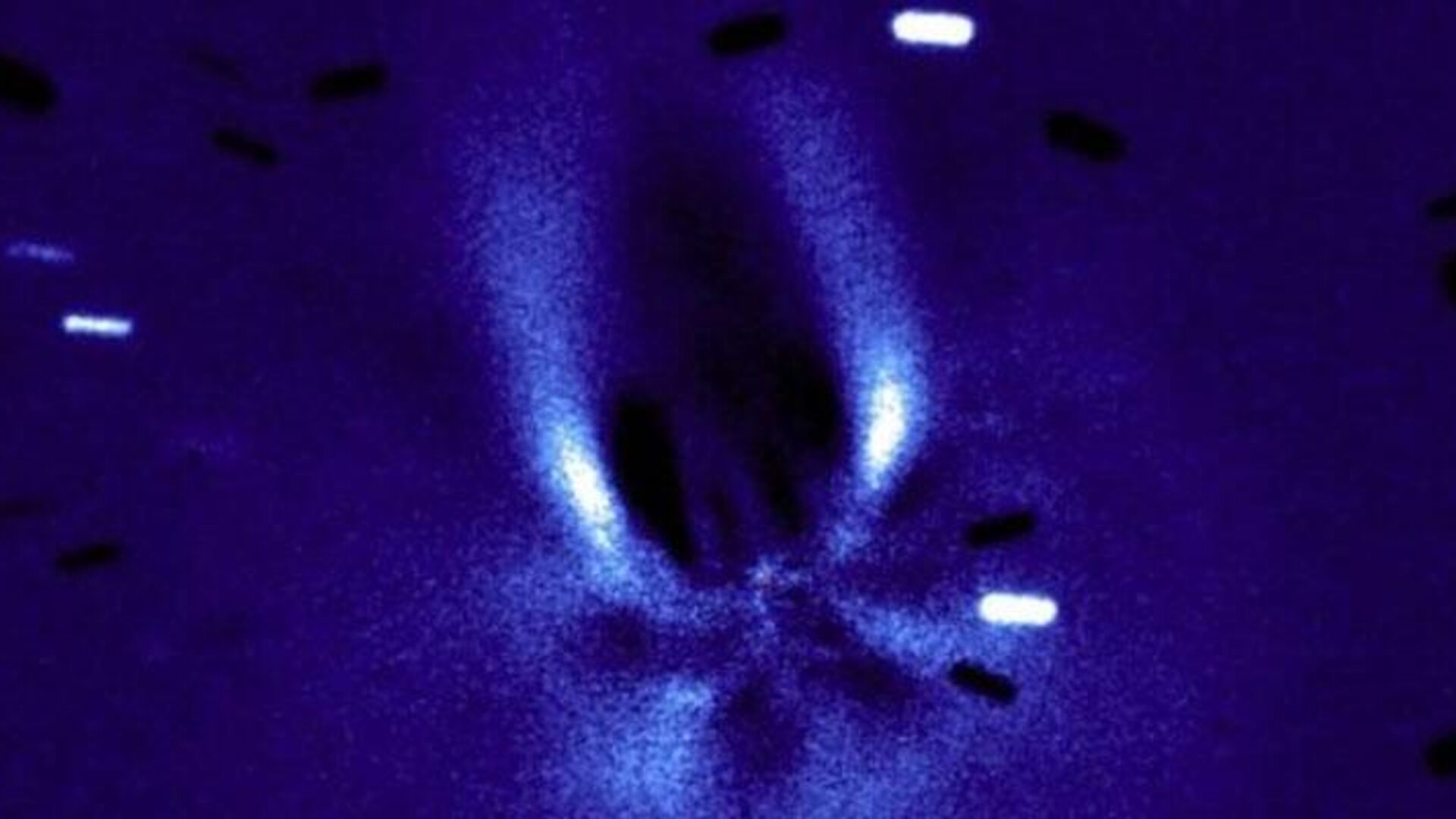https://sputnikglobe.com/20231016/huge-city-sized-comet-sprouts-horns-after-cryovolcanic-eruption-1114240448.html
Huge City-Sized Comet Sprouts ‘Horns’ After Cryovolcanic Eruption
Huge City-Sized Comet Sprouts ‘Horns’ After Cryovolcanic Eruption
Sputnik International
A comet closing in on the Sun has seemingly regrown “horns” of vaporized ice after a new cryovolcanic operation was triggered deep inside the interstellar object. Another eruption was observed in July.
2023-10-16T21:24+0000
2023-10-16T21:24+0000
2023-10-16T21:20+0000
beyond politics
comet
astronomy
volcano
ice
https://cdn1.img.sputnikglobe.com/img/07e7/07/1c/1112233955_45:0:756:400_1920x0_80_0_0_d475b380dd748d70299ce6cabe13e765.jpg
A comet closing in on the sun has seemingly regrown “horns” of vaporized ice after a new cryovolcanic operation was triggered deep inside the interstellar object. Another eruption was observed in July.As the comet 12/Pons-Brooks gets ready for its close approach to the sun next April, it is undergoing some dramatic changes, including huge eruptions of vaporized ice and gas from deep inside its 18-mile-wide core.The gas is being vented through cracks in 12P that have broken due to the pressure, and their irregular shape has caused the gas to vent in a strange and oblong way. Thus, 12P hasn’t developed a regular tail, but is shooting its gases out through two holes in one side, giving it the appearance of a pair of “horns.”The most recent eruption, which began on October 5, has increased its brightness by about 40 times, according to media reports. The huge venting of gas has created a cloud some 373,000 miles across, which is reflecting a lot more sunlight than before.The comet is still about 3AU (three times the distance of Earth’s orbit) from the sun, but it’s expected to make its closest pass in April 2024, at which time it’ll be about 1.55AU from the Earth. Comet 12P will be difficult to see with the naked eye, but should be easily visible in telescopes or binoculars, appearing about as bright as Jupiter’s moon Ganymede.If you miss it, you’ll have to wait until 2095 to see Comet 12P again.
https://sputnikglobe.com/20231002/photos-jwst-spots-dozens-of-rogue-jupiter-sized-planets-in-orion-nebula-close-up-1113861100.html
Sputnik International
feedback@sputniknews.com
+74956456601
MIA „Rossiya Segodnya“
2023
News
en_EN
Sputnik International
feedback@sputniknews.com
+74956456601
MIA „Rossiya Segodnya“
Sputnik International
feedback@sputniknews.com
+74956456601
MIA „Rossiya Segodnya“
comet; horns; millennium falcon; 12/pons-brooks
comet; horns; millennium falcon; 12/pons-brooks
Huge City-Sized Comet Sprouts ‘Horns’ After Cryovolcanic Eruption
Huge balls of dust and ice left over from the formation of the solar system, comets are typically unassuming interstellar objects until they get close to the sun, which heats them up and shoots huge tails of gas behind them, putting on a dramatic show in the night sky.
A comet closing in on the sun has seemingly regrown “horns” of vaporized ice after a new cryovolcanic operation was triggered deep inside the interstellar object. Another eruption was
observed in July.
As the
comet 12/Pons-Brooks gets ready for its close approach to the sun next April, it is undergoing some dramatic changes, including huge eruptions of vaporized ice and gas from deep inside its 18-mile-wide core.
This isn’t your typical comet’s tail, which gradually grows bigger as the comet gets closer to the sun and the sun’s radiation heats it up, vaporizing water and dust on it, which is then blown into space. These eruptions have been sudden and dramatic, increasing 12P’s brightness by 100 times.
The gas is being vented through cracks in 12P that have broken due to the pressure, and their irregular shape has caused the gas to vent in a strange and oblong way. Thus, 12P hasn’t developed a regular tail, but is shooting its gases out through two holes in one side, giving it the appearance of a pair of “horns.”
![Orion Nebula in NIRCam long-wavelength [infrared] channel, imaged by James Webb Space Telescope (JWST) Orion Nebula in NIRCam long-wavelength [infrared] channel, imaged by James Webb Space Telescope (JWST) - Sputnik International, 1920, 02.10.2023](https://cdn1.img.sputnikglobe.com/img/07e7/0a/02/1113861605_0:77:2048:896_1920x0_80_0_0_c22558da07a8cd3f4b2480deaf4c3dff.png)
2 October 2023, 15:37 GMT
The most recent eruption, which began on October 5, has increased its brightness by about 40 times, according to media reports. The huge venting of gas has created a cloud some 373,000 miles across, which is reflecting a lot more sunlight than before.
A Halley-style comet that comes around every 71 years, 12P is known to undergo these types of convulsions, with dramatic changes in brightness being observed during its close passes going back hundreds of years. Other comets with longer orbits might only return after thousands of years.
The comet is still about 3AU (three times the distance of Earth’s orbit) from the sun, but it’s expected to make its closest pass in April 2024, at which time it’ll be about 1.55AU from the Earth. Comet 12P will be difficult to see with the naked eye, but should be easily visible in telescopes or binoculars, appearing about as bright as Jupiter’s moon Ganymede.
If you miss it, you’ll have to wait until 2095 to see Comet 12P again.


![Orion Nebula in NIRCam long-wavelength [infrared] channel, imaged by James Webb Space Telescope (JWST) Orion Nebula in NIRCam long-wavelength [infrared] channel, imaged by James Webb Space Telescope (JWST) - Sputnik International, 1920, 02.10.2023](https://cdn1.img.sputnikglobe.com/img/07e7/0a/02/1113861605_0:77:2048:896_1920x0_80_0_0_c22558da07a8cd3f4b2480deaf4c3dff.png)
